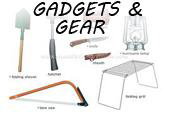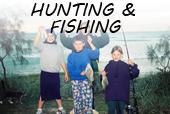Sorting out relevant information on any topic is very difficult but this article on fishing tries to put all the relevant information about fishing at one place.
Being interested in fishing means that you must be eager to gain as much information on fishing as possible. To make things easier for you, we have this article for you having all the relevant information on fishing.
When we decided on writing this article on fishing, we knew that we could provide our readers with something which would be different from what was being presented to them. And now when you are reading this article, you would have to decide on our success.
Fishing is a sport, but it has become less about survival and more about fun in recent decades. There is an issue of fish becoming depleted and many anglers are now employing the practice of catch and release fishing. Catch and release fishing is a great theory, but many people are doing it incorrectly and as a result many fish are dying. A few steps should be followed when trying to catch and release a fish. Once you get the hang of how to do it correctly, you will be able to enjoy your hobby and keep the population of fish full in your favorite stream or lake.
Article reading is something which is done to gain knowledge and information about a particular topic and if these means are not achieved then reading the article would be a waste of time. Now, when you are reading this article on fishing, how would you rate the time spent in reading it?

The best place to start is with the hooks. A fish that has a hole through its mouth is going to be more likely to survive than a fish with a hole in its lung or gill. If you happen to hook a fish in the gut, the best thing to do is to cut off the hook as much as you can then release the fish. Many times the hook will dissolve and the fish will spit it out, but they can also live with a rusted hook hanging from them. Whatever you do, do not tug on your line to pull a hook out or you will severely hurt the fish. If you are able to easily remove the hook, use a pair of needle nose pliers. The process of pulling the hook out is easier if you remove the barbs from the hooks, but try not to wiggle while you pull the hook out.
Learning is a continuous process and you can never claim that you everything worth knowing about any topic and we think that you must have realized this when you have started reading this article.
Fish are obviously unable to survive outside of the water. Therefore, the longer that it takes you to release them, the more it becomes as if you are suffocating them. The way that a fish is gripped when out of the water will make a big difference. For instance, avoid touch a fish’s body with your bare hands. The fish have a slimy protective coat that will be stripped if you touch them with your hands. If you have to touch a fish, make sure that your hands are wet. You may want to wear gloves to protect your hands from cuts or permeating fish smells.
It goes without saying that you are interested in fishing and that is what prompted you to read this article. It is now for you decide if your effort has been fruitful or not.
Part of the fun in fishing is to “play out” the fish. The struggle can be what some anglers wait all day to do. Fish are like humans; when they “work out,” they build up lactic acid. When you are fighting a fish, they are fighting too. Just like when someone works his or her body out and it feels sore, a fish experiences the same thing. The build up of lactic acid can be toxic to a fish even days later. Therefore, if you are going to practice catch and release, try to keep the struggle to a minimum.
Hasn’t this article made you aware of the fact that so much information existed on fishing and that you were unaware of even the fact that you were unaware of it?
Try not to let a fish flop around when you catch them. A fish that flops around can bruise or damage its internal organs, causing them to die later from the injuries that are incurred. You can also revive a fish if you need to do so. A fish is likely to run out of oxygen and pass out, so to speak. In order to revive a fish, you place the fish in the water with their belly down and gently grasp their tail. Start to slowly move their tail back and forth until they give you the signal that they are ready to take off into the water. Sometimes you will need to repeat the process more than once, but don’t let a fish go until they are ready. A fish that is not ready to swim could get carried away and swept into rocks or embankment and cause serious injury.
More than anything, when you are practicing catch and release, have everything ready to go. Make sure that your camera, pliers, and gloves are in reaching distance. Try to take the precautions necessary to preserve fish and one of America’s favorite pastimes.
Are you looking for some inside information on fishing? Here’s an up-to-date report from fishing experts who should know.












